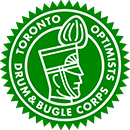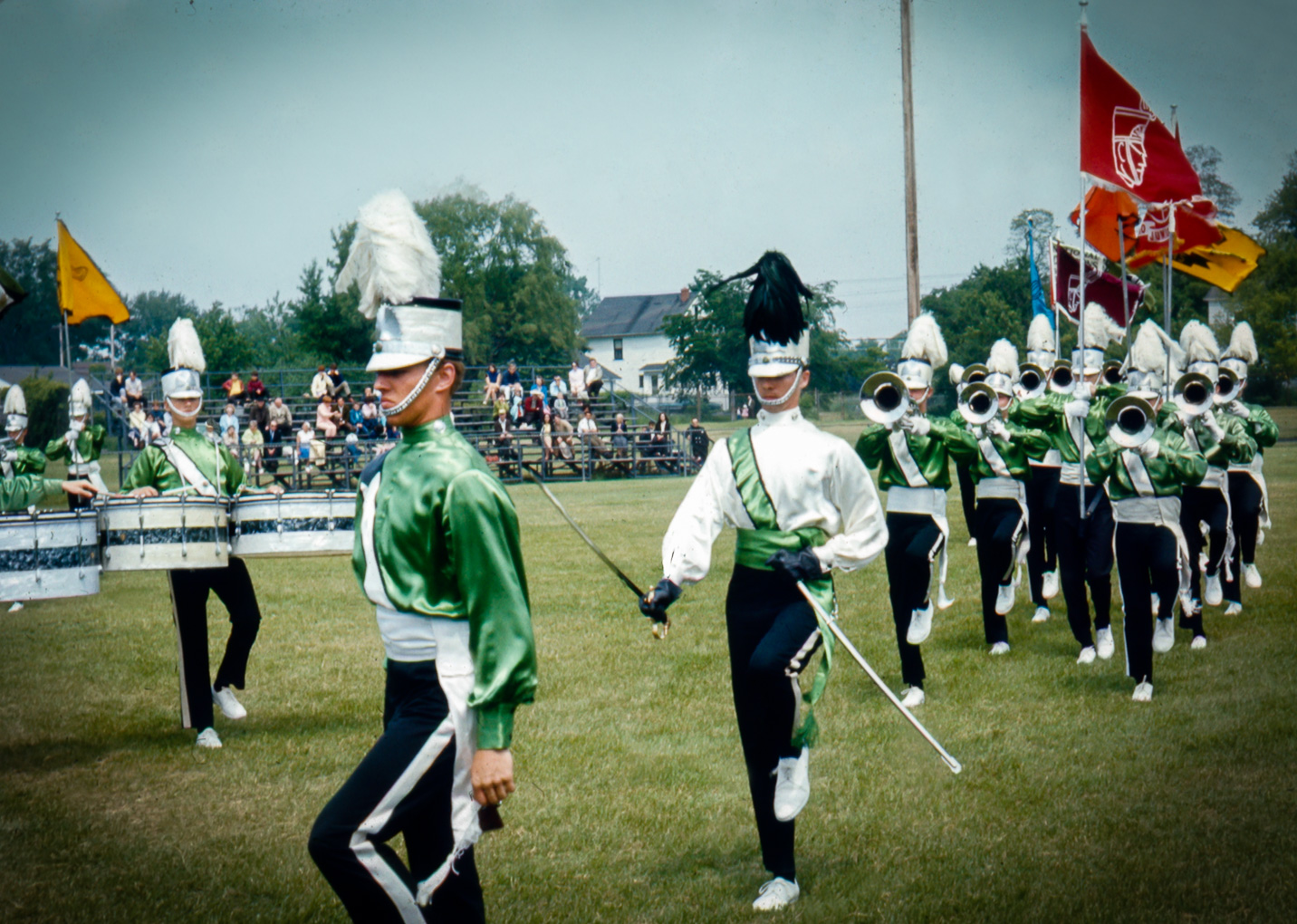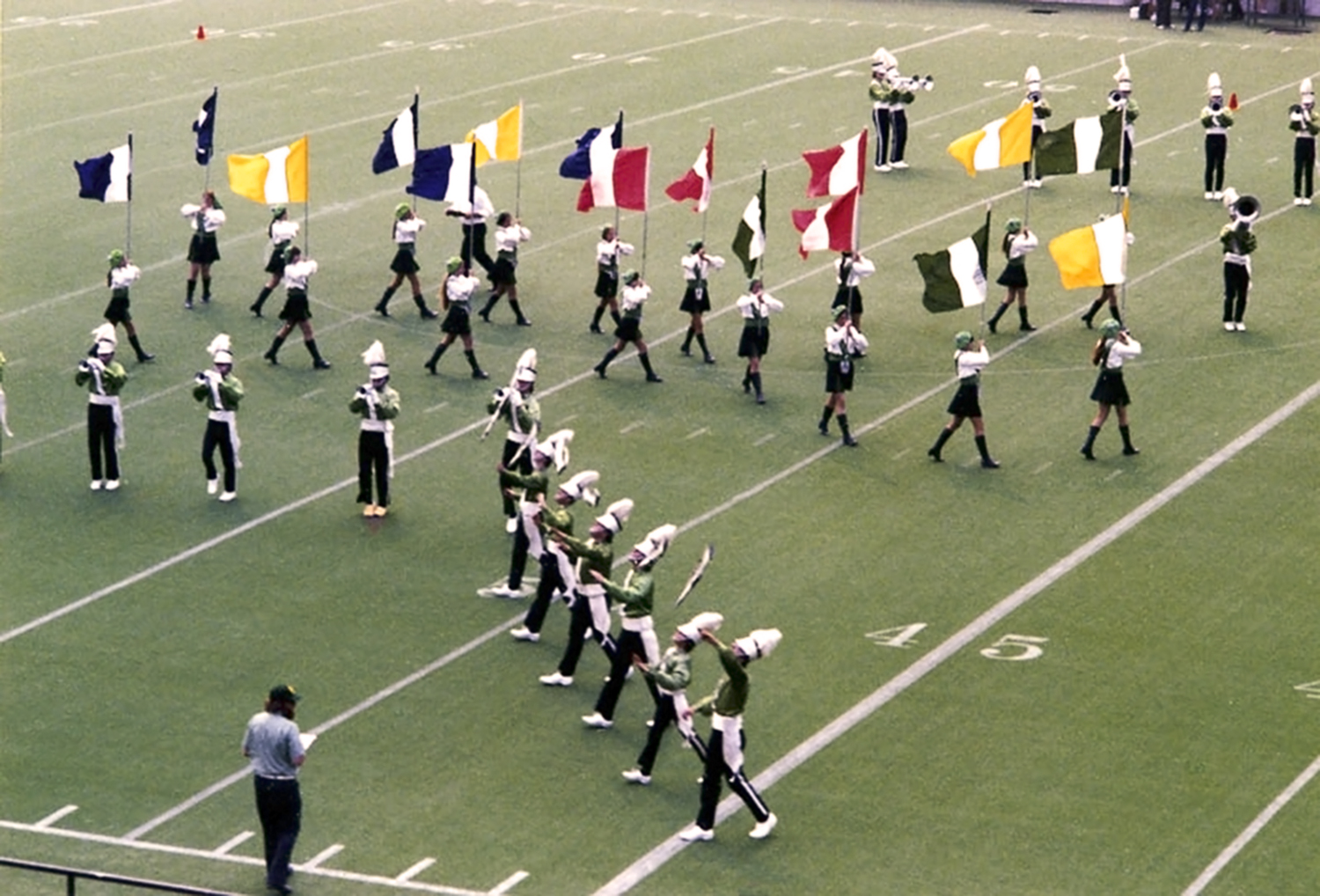
March On! ...the history of the
Toronto Optimists Drum & Bugle Corps
Toronto, Ontario, Canada
Those Were The Days
1969 and ?

Aside from 1967, the 1969 Optimists corps was the best and biggest in their history. And for the first time ever, they would be playing a show completely arranged by Bell, including Hang ‘em High, A Place to Stand, Temptation, Aquarius/Let the Sun Shine In, Those Were the Days and San Francisco.
The drums continued exploring unique time signatures with a drum solo based on Blue Rondo Ala Turk by Dave Brubeck.
The season started with a loss to De La Salle and that’s how it ended. The corps kept gaining on their rivals each contest and perhaps if the season was one week longer, maybe...but on a cold evening in Ottawa, a new champion was crowned. The spread between the two corps was .05.
The string of consecutive national titles was stopped at 11. On retreat, the corps marched off with a wistful arrangement of Those Were the Days.
The next two years were spent in the wilderness, competitively. Concerns arose as to whether the corps could ever right itself again. Losing takes its toll and feeds on itself. Morale suffers; confidence is shattered.
Bell, at the end of 1969, realized that perhaps it was time for new blood that would generate new enthusiasm and ideas. He turned control of the horn line over to Paul Thompson, a long-term marching member with a strong teaching background.
One of the best accomplishments of the corps in the early years of the 1970s was the resurrection of the feeder corps system. Al Tierney set out to start a kiddie corps from scratch. This man’s executive and planning abilities were so extraordinary that on registration day there were more than 250 kids signed up.
Not to be outdone, Dick Brown, a man with an incredible wealth of drum corps experience, started a second feeder corps on the other side of town. The Optimists Cadets and Optimists Lancers were the new foundation and by 1972 they were feeding a steady supply of members to the Optimists.
1972 thru 1975

The 1972 edition of the corps was the best ever fielded. It was also the first time that females marched in the “Green Machine” and they marched incredibly well. The corps presented a big, brassy sound with arrangements by Larry Kerchner and drum charts by Kaiser. The show generated non-stop excitement, with a rousing opener, Paint Your Wagon, the theme from “Patton”, a bold rock sound to More & More, a big band concert medley of Caravan and Moonlight Serenade and a sweet exit of Superstar.
The year ended with an upset victory over De La Salle at Canadian Nationals. The margin of victory was .05. In three separate years, the difference between these two great corps was one half of one tenth!
The 1973 season should have been a very strong one. It wasn’t. Internal conflicts burst into the open and many key members left. The corps was still reeling in 1974 and finished behind Seneca Princemen at Nationals and 34th at DCI in Ithaca, NY.
But the Optimists were a very resilient drum corps. Nothing proved this more than 1975. Peter Byrne took over as horn instructor and the horn line took on a much more sophisticated sound with show-stopping arrangements by Wayne Downey and Ray Roussel, including a Judy Garland medley, Indian Lady and Soulero.
At DCI in Philadelphia, the Optimists made the largest improvement in placement ever recorded moving from 34th to 16th. Their performance at Canadian Nationals in Kitchener, Ontario., left the crowd breathless. It was the last Canadian Championship appearance ever of the Toronto Optimists.
| Small, But Mighty |  |
 |
The Seneca Optimists |
| Navigate to the previous or next page of this story | ||||||
|---|---|---|---|---|---|---|
| Small, But Mighty |  |
 |
The Seneca Optimists | |||